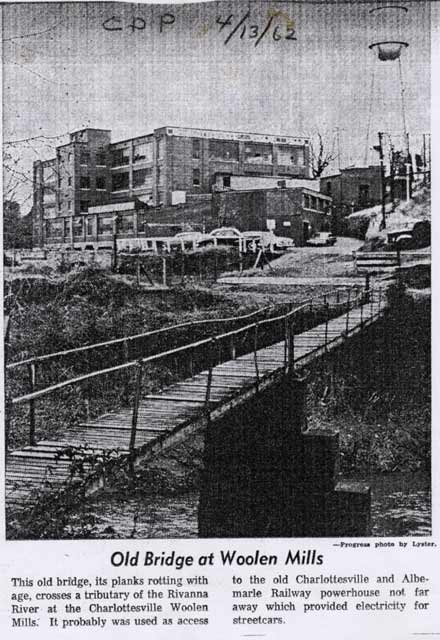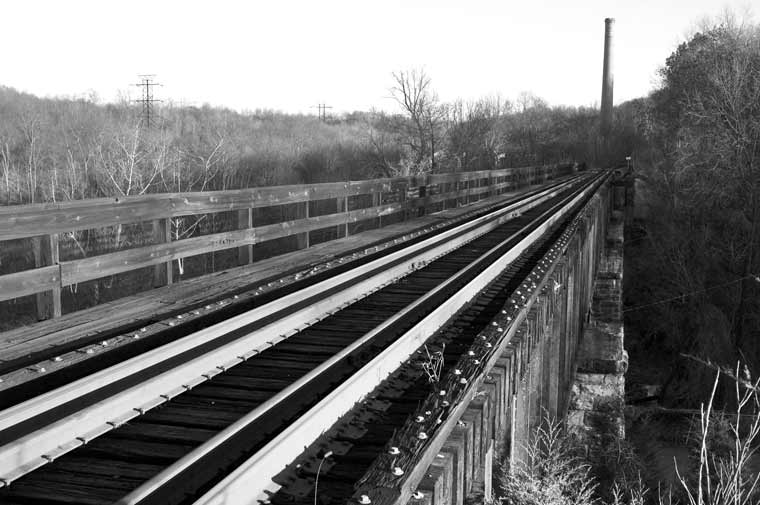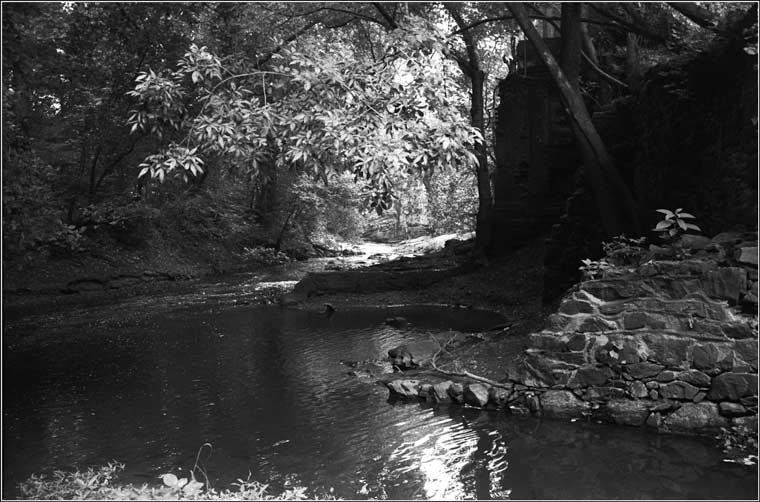new source of energy

The effective use of electricity had already been demonstrated locally when in 1894 the city street railway line adopted it. As these cars rattled about the town, the woolen mills directory pondered the possibilities of the dynamo for their own use. In 1899 the mill began receiving supplemental power from the local electric light company and in the following year installed its own dynamo to "add very materially to the capacity of the mills."
At the same time, embedded in a series of proposed amendments to the company's charter was a provision giving the mill the right to dispose of any portion of its power by contract, lease, or sale. This clause anticipated the prospect of developing on nearby property an electric power plant connected to a dam on the Rivanna. Several experts were called in but when they estimated the cost to be about $100,000 the plan was shelved. In 1909, however, when contract negotiations with the electric light company broke down, an "oil engine" was purchased to provide light and power.
With electricity gradually assuming more and more of the burden, the mill approached the war years still utilizing water power but gradually adopting the new source of energy. --Harry Poindexter
Labels: Moore's Creek, Poindexter History


